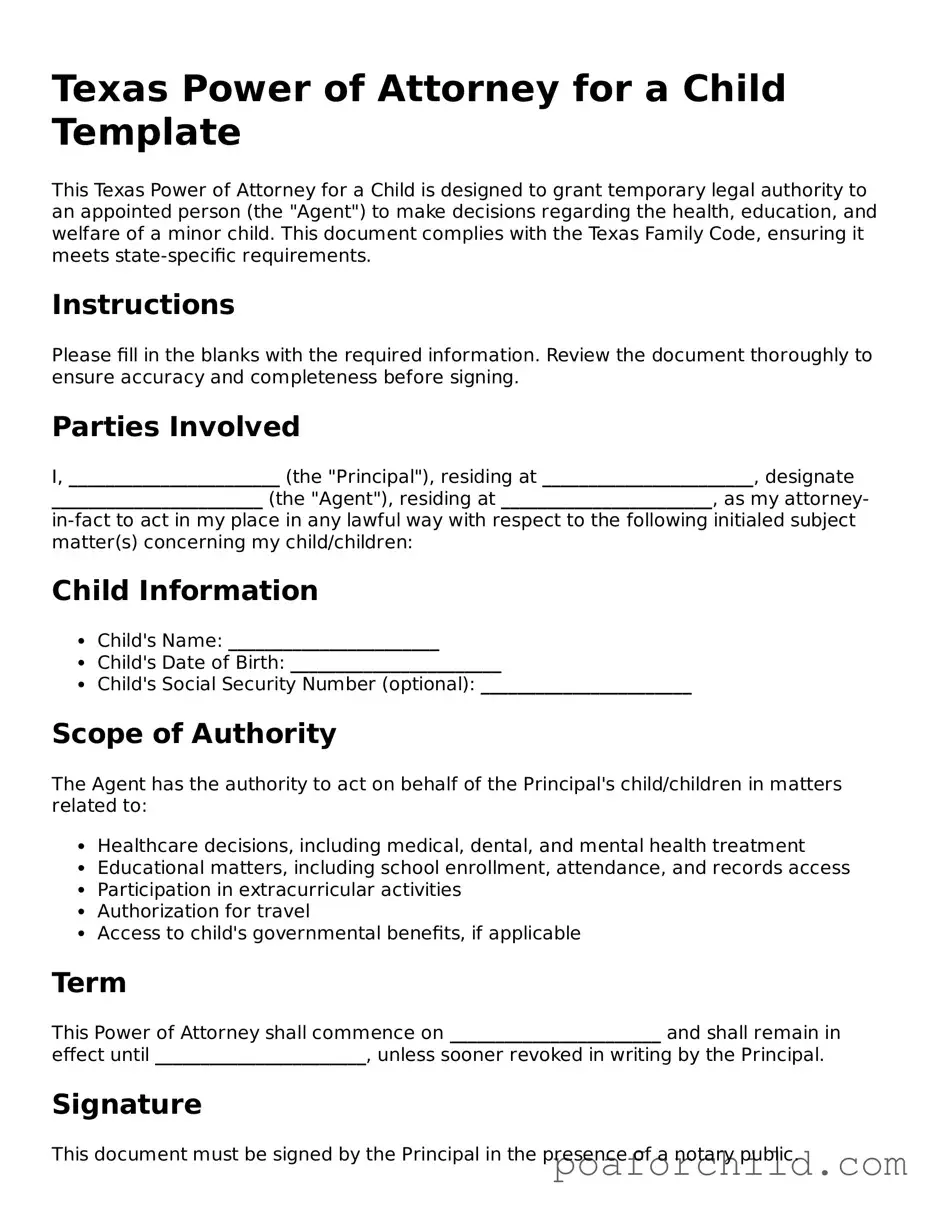Detailed Guide for Using Texas Power of Attorney for a Child
When parents or legal guardians find themselves unable to directly supervise their child's affairs due to unforeseen circumstances, they might consider using a Power of Attorney for a Child form. This legal document authorizes another person, often a close relative, to make decisions and perform actions related to the care of the child in the parent's absence. Given its potential impact, filling out this form accurately is paramount. The process involves providing detailed information about the child, the guardians, and the appointed agent, alongside specifying the scope of authority being granted. To ensure clarity and prevent any legal misinterpretations, following these steps methodically is advised.
- Identify all parties involved: Clearly write the full legal names of the child, the parent(s), or legal guardian(s) granting the authority, and the individual being designated as the agent. If more than one agent is being appointed, details for each must be distinctly provided.
- Specify the duration: Indicate the exact start and end dates for which the Power of Attorney will be in effect. Typically, states have a maximum allowable duration for such delegations concerning a minor.
- Define the powers granted: Detail the specific responsibilities and decisions the agent is authorized to make. This can range from medical decisions, educational choices, to general welfare and daily activities. Being explicit about the agent’s scope of authority helps in preventing overreach and clarifies expectations.
- Include relevant dates and locations: Dates and locations are crucial, particularly in a legal document such as this. Make sure to include the date when the Power of Attorney will go into effect, and if applicable, any significant locations that might relate to the delegated powers (e.g., specific medical facilities or schools).
- Signatures: The document must be signed by the parent(s) or legal guardian(s) in the presence of a notary. Some states may require additional witnesses. The agent should also sign, acknowledging their acceptance of the responsibilities being entrusted to them.
- Notarization: Finally, the form must be notarized. This includes having a notary public sign and seal the document, formally verifying the identities of all signing parties and the voluntariness of their actions.
Filling out the Power of Attorney for a Child form with due diligence ensures that, in the parent's absence, the child's welfare is legally and practically managed by a trusted individual. It’s a significant step that provides peace of mind for the parent or guardian, knowing their child's affairs are in capable hands. While this form is instrumental in safeguarding the child's best interests during challenging times, consulting with a legal advisor can provide further clarity and ensure the document’s compliance with state laws.
